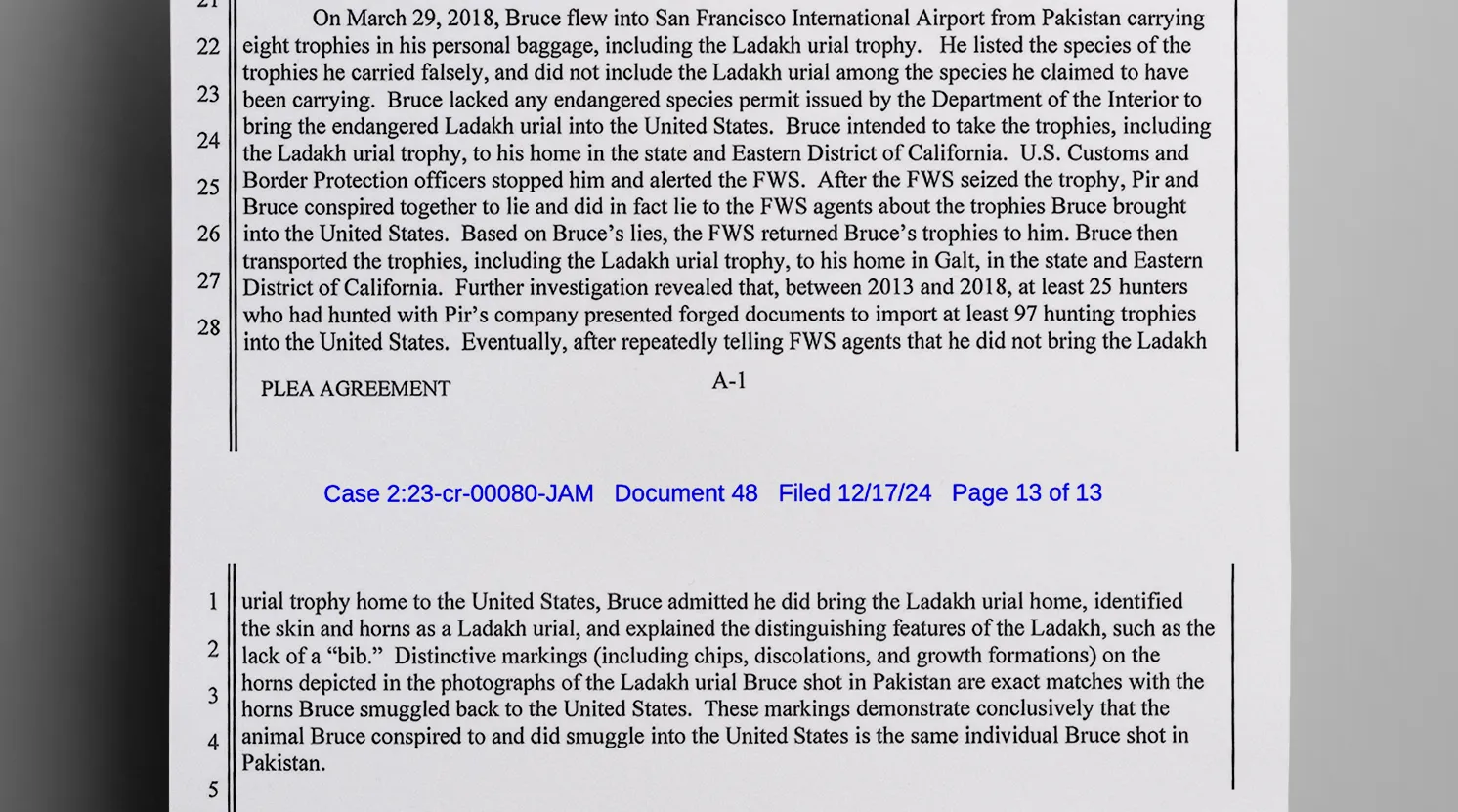Big Game Hunter Tries to Bring Endangered Species Trophy Home to California

Jason Keith Bruce of California has pleaded guilty to charges related to his trying to smuggle a trophy from an endangered animal into the United States.
Bruce was a recreational big game hunter who he went to Pakistan to hunt a Ladakh urial with the help of Pir Danish Ali, a 45-year-old Pakistani, according to a Justice Department press release. Ladakh urials are endangered wild sheep from the Trans-Himalayan region of Pakistan. Court documents state that Bruce paid $50,000 for a chance to hunt them.
Bruce is scheduled to be sentenced by U.S. District Judge John A. Mendez on May 20, 2025. He faces a maximum statutory penalty of 5 years in prison and a $250,000 fine for the conspiracy charge. If convicted on all charges, Bruce could receive up to 26 years in prison and fines totaling $550,000.
Claimed Trophy Was Different Species, Created Forged Documents
After their trip, Bruce and Ali decided to smuggle the trophy from Pakistan to the United States in 2018, along with an additional seven trophies. When questioned by Customs and Border Protection and the U.S. Fish and Wildlife Service, Bruce claimed the trophy was from a different species of animal and used forged documents.

An investigation revealed Pir’s company submitted other forged documents to bring illegal animal carcasses to the U.S. from Pakistan. No less than 97 trophies were brought into the U.S. under forged documents by at least 25 different hunters, all of whom hunted with Pir’s company from 2013 to 2018, according to U. S. Fish and Wildlife.
Conspiracy to Smuggle an Endangered Species
Pir and Bruce started their conspiracy to smuggle exotic animal carcasses into the U.S. back in 2016, according to the Daily Mail.
With the population of the Ladakh urial being less than 200, Pir warned Brice about the danger of being discovered. Still, Bruce insisted they go ahead with their plan to hunt and smuggle the animal.
This sheep is regarded as one of the rarest in the world. Thanks to its amazing beauty, it represents a status of prestige in hunting circles, especially since it is a subspecies of the wild sheep that can be found solely in the Ladakh region of India and Pakistan.
The Ladakh urial started to fade away in the 1980s, when the population of these sheep started to decline noticeably thanks to habitat destruction and illegal hunting. In 2003, the International Union for Conservation of Nature (IUCN) placed the Ladakh urial on the endangered species list based on the estimated population and threats it had to deal with. Endangered status means that the risk of extinction is real.
Discover More Muck
First AI-Powered Lawsuit Exposes California’s Eco-Fraud Empire
Feature John Lynn | Apr 10, 2025

Former Child Soldier General Lied to Get Green Card
Report Strahinja Nikolić | Feb 27, 2025

Weekly Muck
Join the mission and subscribe to our newsletter. In exchange, we promise to fight for justice.
Weekly
Muck
Join the mission and subscribe to our newsletter. In exchange, we promise to fight for justice.





